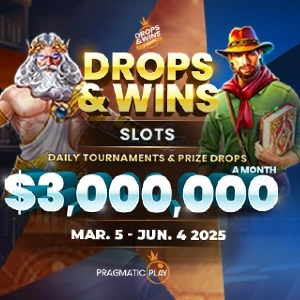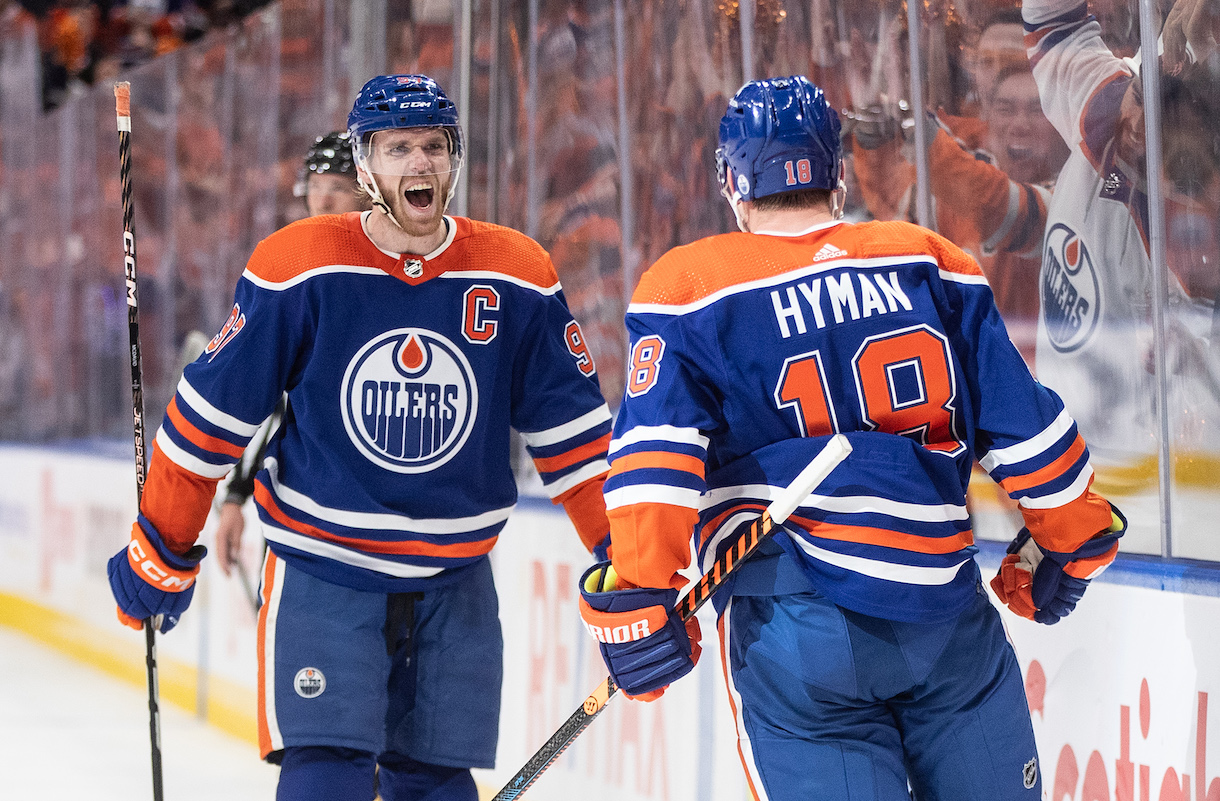Hockey is Canada’s favourite sport. Unsurprisingly, the NHL betting market in Canada — home to seven of the league's 32 teams — is quite popular.
There are many ways to bet on the NHL at NorthStar Bets, which we'll cover in the sections below.
How to bet on the NHL
 BET FINDER: Search & Bet!
BET FINDER: Search & Bet!
If you're looking to pick the winner of a game, you can bet on a team to win on the moneyline or puck line. Not interested in choosing a winner or loser? Then betting on game totals and player props might be your speed.
Don't fret if you missed putting in your bets before the game starts, either. Live betting is a popular way to wager on the NHL.
You can also bet on down-the-road events, such as the Stanley Cup champion or Hart Trophy winner. Those are known as futures markets. Let's take a look at all of these market types, starting with how to bet on NHL moneylines.
Moneyline
A moneyline wager is a favourite among NHL bettors and one of the simplest ways to make a bet. When wagering on the moneyline (listed as ML for short), you're predicting which team will win the game straight up. That’s it.
Each team is assigned a different set of odds based on its win probability. That will ultimately determine the potential payout. A team that is favoured has a minus (-) sign before its odds, while the underdog has a plus (+) sign.
Odds will vary considerably between matchups based on the level of success among teams. A top squad like the Edmonton Oilers, for example, will be favoured in most of its games. In that case, you'll see a minus sign before Edmonton's odds.
If the Oilers closed as -150 favourites, it means their implied win probability is 60.0%.
Additional factors, such as home-ice advantage and key injuries, can shift the odds further. Sometimes a moneyline favourite holds odds of -300 or -400.
At -400, the favoured team's implied win probability is 80.0%, requiring a larger wager to return even a small profit.
This chart demonstrates your potential return on investment depending on the odds and how much you wagered:
| Odds | Implied win probability | Wager amount | Win |
| -110 | 52.4% | $110 | $100 |
| -400 | 80.0% | $400 | $100 |
| +160 | 38.5% | $100 | $160 |
Puck line
Think of the puck line like the point spread. In higher-scoring sports like basketball and football, the spread is one of the most popular betting choices. It helps level the playing field in a sense, giving bettors an option to wager on a big underdog to either win outright or lose within a certain margin.
On the moneyline, a lopsided matchup features a favourite with minimal value against a long shot underdog. But on the puck line, both sides will have more reasonable odds to cash.
From the sportsbook's perspective, puck line markets encourage action on both sides because the odds are more aligned.
In sports like hockey and baseball, which feature less scoring, large point spreads don't exist because the typical margin of victory is small. But you can bet on a modest spread in hockey — called the puck line — with the handicap generally set at 1.5.
The puck line is popular because sometimes a moneyline bet doesn’t make a lot of sense.
For example: If the Florida Panthers are hosting the San Jose Sharks and you're confident in a Florida blowout, you'd get better odds and a greater return if you bet Panthers -1.5 (to win by two or more goals) rather than betting Panthers ML.
The Panthers would be large favourites and there wouldn’t be much value on a moneyline play.
Puck lines allow bettors to potentially get a favourite at plus-money odds. Alternatively, they allow bettors to back an underdog without needing that team to win. But remember, when backing a puck line favourite, the team has to win by at least two goals for your bet to cash.
The +1.5 underdog, on the other hand, can lose and still cash your bet. They just can't lose by more than one goal.
Also, like point spreads, there are alternative puck lines. So you could select the handicap to be 2.5 or even 3.5. You can find good value here if you expect a favourite to blow out a last-place team, for instance.
How to bet on NHL totals
Along with the moneyline, wagering on the total amount of goals scored in a game is among the most popular hockey betting markets. You will see totals referred to as the over/under or O/U. All three terms are interchangeable.
Betting on the total is also straightforward. You will be given a number of goals that the two teams have to combine to go over or under and you can wager on either option. The total for most NHL games is set between 5.5 and 6.5.
You can bet on alternative totals as well. For instance, you will have the option to place a bet on a 4.5 or 3.5 total and while you’d be playing it safe and your probability of winning would increase if you bet the over (compared to say a 5.5 standard O/U total), the odds would alter as well and your potential payout would decrease substantially.
Or it would increase substantially if you bet the under on an alternative total and cashed the bet.
Here’s an example of what the odds could look like for different totals:
| Total | Over | Under |
| 5.5 | +110 | -130 |
| 4.5 | -260 | +205 |
| 3.5 | -450 | +350 |
You can also bet on team-specific totals as well and place a bet on how many goals you think the Leafs will score in a contest, for instance.
How to bet on NHL props
Player props involve betting on individual outcomes in a game. You can place a bet on how many goals you think Auston Matthews will score in a contest, how many shots Quinn Hughes will put on net, or how many power-play points Connor McDavid will record.
Goal props are presented in a few different ways. You can bet on whether a player will score the first goal of the game, the last goal of the game or score at any time during the contest. Expecting a star like Matthews to have a big game? You can also bet on him to score two goals or even a hat trick.
You can also place bets on assist and point totals for a particular game. While the player prop market is more robust in other sports, there are still plenty of options for bettors to choose from in addition to the game-specific outcomes.
There are markets for game props, too. These include over/unders on total shots on net for the contest, total faceoffs, and the highest-scoring period.
Futures betting
The futures market involves betting on outcomes that will happen … in the future. While it’s not as robust as the daily markets that bettors can choose from, this is a great way to bet if you’re willing to play the long game. Good value can be found here.
When all 32 teams theoretically have a chance to win the Stanley Cup ahead of the season, the odds are going to look a lot different than what they would once the playoff field is set. The same goes for season-long awards. Teams and players will separate themselves as contenders and favourites as the season goes on, ultimately shortening their odds.
For instance, the Boston Bruins could be had for around +3,000 to win the Cup ahead of the 2022-23 season. But their odds shortened to +330 at the start of the postseason.
Let’s say the Bruins had gone on to win the Cup, which we know they didn't, a bettor who placed a $100 wager when Florida was at +3,000 would have won $2,670 more than the person who bet on the club at +330.
Other common futures markets that bettors can wager on are the Hart Trophy, the O/U on a team’s win total, the Calder Trophy, the Vezina Trophy, division winners and more.
The futures market is open throughout the season, so you can place these types of bets at any time but the odds are constantly changing based on performance and injury.
Parlays
A parlay consists of making two or more bets on a single ticket and wagering once. Every bet on the parlay, known as legs, must be correct in order for you to win your ticket. Even if you get everything on the parlay right except for one play, you will lose the bet.
The more bets you attach to a single ticket decreases your likelihood of winning but parlays are attractive to some because the payouts are bigger than a single-game wager.
An example of an NHL parlay looks like this:
| Legs | Odds |
| Jets +1.5 | -115 |
| Sidney Crosby to score | +115 |
| Hurricanes moneyline | -140 |
The combined odds of this parlay are +587. If you predicted all three of those outcomes correctly, you would win $587 (a total payout of $687) on a $100 bet.
You can build a parlay like the above example, where you mix markets and matchups, but you can also make a same-game parlay bet. Here, you could combine a moneyline, over/under, player prop, and so on, from one specific contest.
An example of this would be betting on the Jets to win, Mark Scheifele to score, and Winnipeg to record more than 3.5 goals. Again, like any parlay, these types of bets are riskier for the bettor because the probability of winning decreases the more bets you tack on to the ticket.
Live betting
In-game betting provides users with options to bet on games as they play out in real time. Among the markets you can bet on are the moneyline, over/under and puck line.
Live betting can offer great value if a big favourite falls behind early and becomes an underdog on the ML as a result. Under that scenario, you would net a higher return by betting on them mid-game than you would have before the contest started if they went on to win.
The odds constantly change throughout a game. This is especially true after goals are scored.
Markets will sometimes close during a power play or late in the game, but this is another way you can bet after the puck drops.





